Disclosure: This article contains affiliate links. We may earn a commission from purchases at no extra cost to you, which helps our travel content.
The first time my feet touched Bogotá soil, I wasn't prepared for how this high-altitude Andean city would completely captivate my taste buds. Standing 8,660 feet above sea level, Colombia's capital isn't just a cultural and artistic powerhouse—it's a culinary revelation that's been quietly transforming into one of South America's most exciting food destinations. During my recent week-long exploration with my college friend Mariana, we discovered a city where centuries-old food traditions dance alongside innovative gastronomy, where humble street carts and white-tablecloth establishments equally deserve your attention. This culinary journey through Bogotá isn't just about eating—it's about understanding Colombia's complex history, diverse geography, and the passionate people breathing new life into its food scene. Grab your partner's hand and come along as I guide you through the markets, neighborhoods, and dining rooms that make Bogotá a paradise for food-loving couples seeking connection through cuisine.
Navigating Paloquemao Market: The Heart of Bogotá's Food Culture
My love affair with Colombian cuisine properly began at Plaza de Mercado de Paloquemao, where Mariana and I arrived early on a Tuesday morning. The market was already pulsing with energy as locals haggled over prices and vendors called out their offerings. This sprawling market is where Bogotá's culinary story unfolds most authentically—where the country's biodiversity is on full display through mountains of exotic fruits that seem plucked from another planet.
I stood mesmerized before pyramids of granadilla, feijoa, lulo, and my personal favorite, the spiky, alien-looking pitahaya (dragon fruit). A vendor named Doña Clara, noticing my fascination, offered samples of each fruit, patiently explaining their names and how locals enjoy them. The experience reminded me of taking my kids to markets in Vietnam—that beautiful moment when unfamiliar foods become doorways to cultural understanding.
'Try this,' she insisted, handing me a cup of freshly blended lulo juice—tangy, citrusy, with hints of rhubarb. It was revelatory.
Beyond the fruit section, we wandered through aisles of fresh herbs, crates of potatoes in more varieties than I could count (Colombia boasts over 200 types), and vendors selling pre-made ají hot sauce in recycled soda bottles—each family recipe slightly different from the next. I couldn't resist purchasing a bottle, which became our constant companion throughout the week's culinary adventures.
The market isn't just a place to shop—it's where to experience breakfast like a true Bogotano. We followed the crowds to a busy stall where women were flipping arepas on huge griddles and ladling out bowls of changua, a milk-based soup with eggs and cilantro that fortifies locals against the crisp Andean mornings. Paired with a strong tinto (black coffee), it was the perfect fuel for our day of exploration.
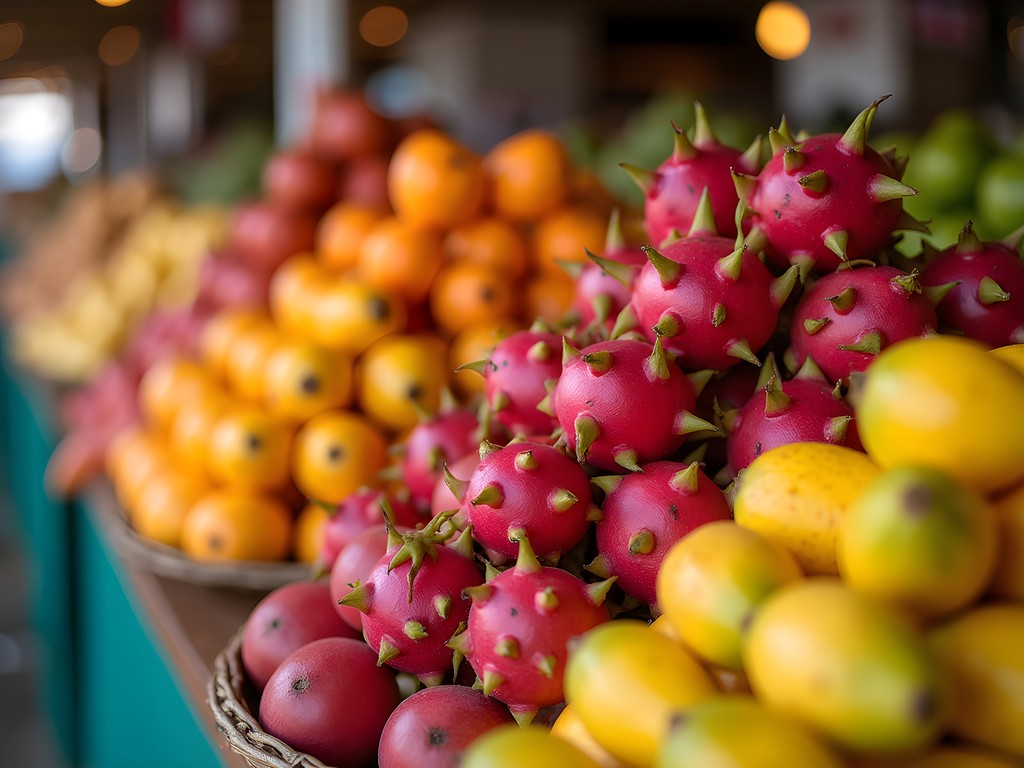
💡 Pro Tips
- Visit Paloquemao Market on Tuesday or Thursday mornings when it's bustling but not overwhelmingly crowded
- Bring small bills (Colombian pesos) for easier transactions with vendors
- Ask vendors for samples before buying—most are happy to let you taste their products
Street Food Adventures: Discovering Bogotá One Bite at a Time
There's something magical about street food—the way it democratizes cuisine, making local flavors accessible to everyone regardless of budget. In Bogotá, the streets themselves tell Colombia's culinary story, and exploring them with someone special creates shared memories that last far longer than any souvenir.
Our street food adventure began in La Candelaria, Bogotá's historic heart with its colonial architecture and vibrant murals. As an avid photographer of street art, I was in heaven capturing the colorful expressions adorning buildings while simultaneously tracking down the most authentic street eats. The neighborhood's narrow, steep streets demand comfortable footwear—my hiking sandals proved perfect for navigating the cobblestones while providing enough support for our hours of walking.
At the corner of Carrera 2 and Calle 9, we discovered an arepas de choclo vendor whose golden corn cakes stuffed with soft cheese have sustained locals for decades. The contrast between the slightly sweet corn exterior and the salty cheese center creates a perfect balance that needs no adornment—though the homemade ají sauce on the side adds welcome heat.
No street food tour is complete without sampling obleas, thin wafer discs sandwiched together with arequipe (Colombian dulce de leche), mora (blackberry jam), cheese, or all three combined if you're feeling adventurous. We watched, mesmerized, as the vendor assembled our treats with the speed and precision that comes from years of practice.
Perhaps my favorite discovery was the carts selling cups of fresh-cut mango, pineapple, and watermelon sprinkled with salt and lime juice—a refreshing counterpoint to the city's fried offerings. The vendor we visited had been in the same spot for 17 years, and his knife skills were nothing short of artistic as he transformed whole fruits into perfectly uniform pieces in seconds.
For the more adventurous, the traditional Colombian street food hormigas culonas (roasted big-bottomed ants) offers a crunchy, nutty protein source that's been enjoyed since pre-Colombian times. I'll admit it took some courage, but the earthy, almost bacon-like flavor was a delightful surprise that connected me to centuries of local food traditions.
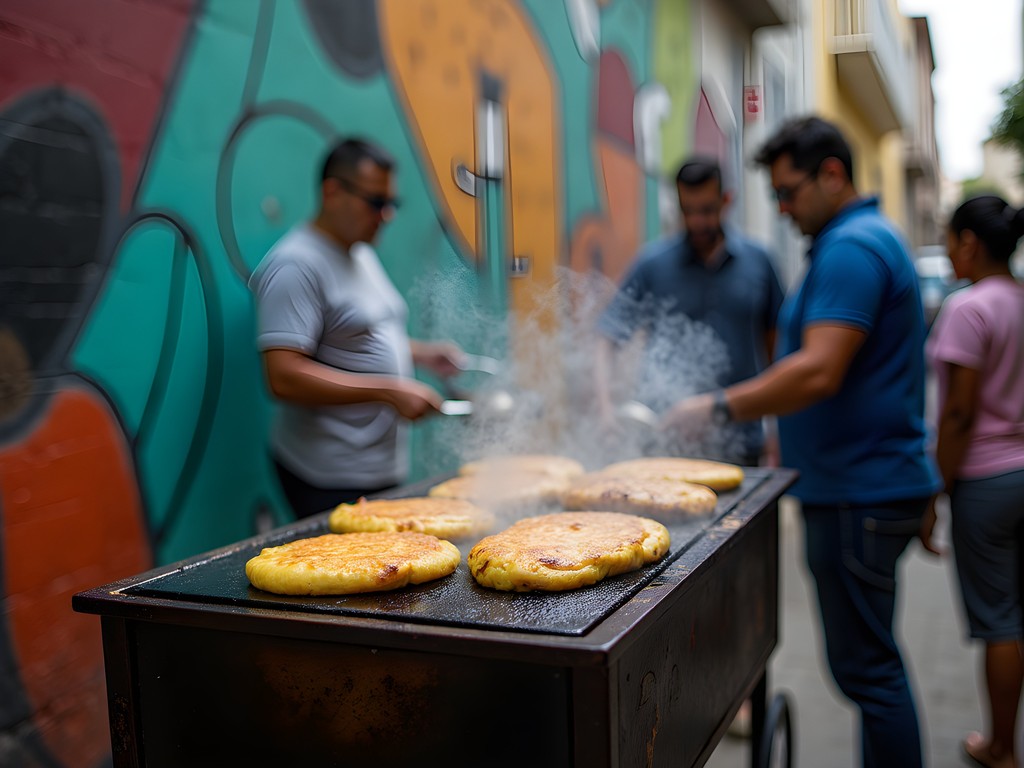
💡 Pro Tips
- Bring hand sanitizer and small packets of tissues for impromptu street food stops
- Look for street food stalls with long lines of locals—they know where the best food is
- Start with small portions so you can sample more variety throughout the day
Coffee Culture: Beyond Your Average Cup of Joe
For a country producing some of the world's finest coffee beans, Colombia's internal coffee culture has historically been surprisingly basic—with the best beans traditionally exported and locals drinking tinto, a simple black coffee often made from lower-grade beans. But Bogotá is at the forefront of a coffee revolution that's changing this paradigm, creating spaces where Colombians and visitors alike can appreciate the extraordinary diversity and quality of the country's coffee heritage.
Mariana and I dedicated an entire morning to exploring this scene, starting at Azahar Coffee Company in Chapinero. This bright, minimalist café connects customers directly with producers, displaying photos and stories of the farmers behind each bean variety. We participated in a cupping session (a formal coffee tasting) that revealed how dramatically terroir affects flavor—from the bright, citrusy notes of beans grown in Huila to the chocolate undertones of those from Nariño.
What made the experience special was the barista's passion for explaining how altitude, climate, and processing methods influence the final cup. I've carried my coffee journal through cafés across four continents, and the notes I took that morning in Bogotá rank among my most treasured coffee memories.
At Café Cultor in Quinta Camacho, housed in a beautifully preserved English-style house, we discovered their commitment to working with farmers in post-conflict zones—using coffee as a vehicle for peace-building after Colombia's complex history of internal strife. The café offers a 'Coffee Tour' flight featuring three different preparation methods that highlight how brewing technique transforms the same bean.
Perhaps most memorable was our visit to Catación Pública, where we participated in a two-hour workshop on brewing methods. The instructor, Camilo, demonstrated everything from the traditional Colombian cloth filter method to modern AeroPress techniques. What struck me most was how coffee rituals—the careful measuring, the attentive brewing, the mindful tasting—create perfect moments of connection. Couples around us were engaged in animated discussions about flavor notes and preferences, proving that shared discovery is one of travel's greatest pleasures.
By week's end, I had a new appreciation for Colombian coffee beyond the commercial brands we know in North America. Each cup told a story of specific mountains, specific hands that picked the cherries, specific traditions that brought those beans to my cup.

💡 Pro Tips
- Book coffee tasting workshops in advance as they often fill up quickly
- Ask baristas about direct trade practices—many Bogotá cafés have direct relationships with farmers
- Try different brewing methods with the same bean to understand how preparation affects flavor
The New Colombian Cuisine: Fine Dining with Local Roots
Bogotá's fine dining scene represents a culinary renaissance that's redefining Colombian cuisine. Chefs are turning inward, drawing inspiration from the country's biodiversity and indigenous food traditions rather than looking abroad. The result is sophisticated, innovative cuisine that remains distinctly Colombian—a perfect special occasion experience for couples looking to celebrate during their Bogotá stay.
Our splurge dinner at Leo, helmed by chef Leonor Espinosa (named Latin America's Best Female Chef), was a transformative experience that Mariana and I still talk about months later. The restaurant's 'Ciclo-Bioma' tasting menu is a gastronomic journey through Colombia's diverse ecosystems—from coastal mangroves to Amazonian rainforests. Each exquisitely plated dish featured ingredients I'd never encountered before: copoazú fruit, mojojoy larvae, and bijao leaves used by indigenous communities.
What struck me most was how the meal told a story—not just of flavors, but of Colombia's cultural heritage and ongoing efforts to preserve traditional knowledge. When the server presented a dish featuring ants (a callback to the street food we'd tried days earlier, but elevated to fine dining status), I appreciated how the restaurant honored indigenous food practices rather than treating them as novelties.
At Mini-Mal in Chapinero, chef Eduardo Martínez focuses on ingredients from Colombia's Pacific coast, an area with strong Afro-Colombian influences. The restaurant works directly with small-scale producers from vulnerable communities, creating economic opportunities while preserving culinary traditions. Their fish dishes seasoned with viche (a traditional Pacific coast herb mix) were unlike anything I'd tasted before—complex, layered, and deeply connected to a specific cultural geography.
For our final night, we visited Prudencia in La Candelaria, where an open wood-fired kitchen turns local ingredients into rustic yet refined dishes. Housed in a renovated colonial building with a peaceful interior courtyard, the restaurant offers a four-course menu that changes daily based on market availability. The slow-roasted vegetables grown at nearby páramo (high-altitude ecosystem) farms were revelatory—intensely flavored due to the harsh growing conditions.
Before our trip, I invested in a food photography kit to better capture these culinary masterpieces. The soft diffuser and mini-tripod allowed me to document our meals without disrupting other diners—preserving memories of these extraordinary dishes while respecting the restaurant atmosphere.
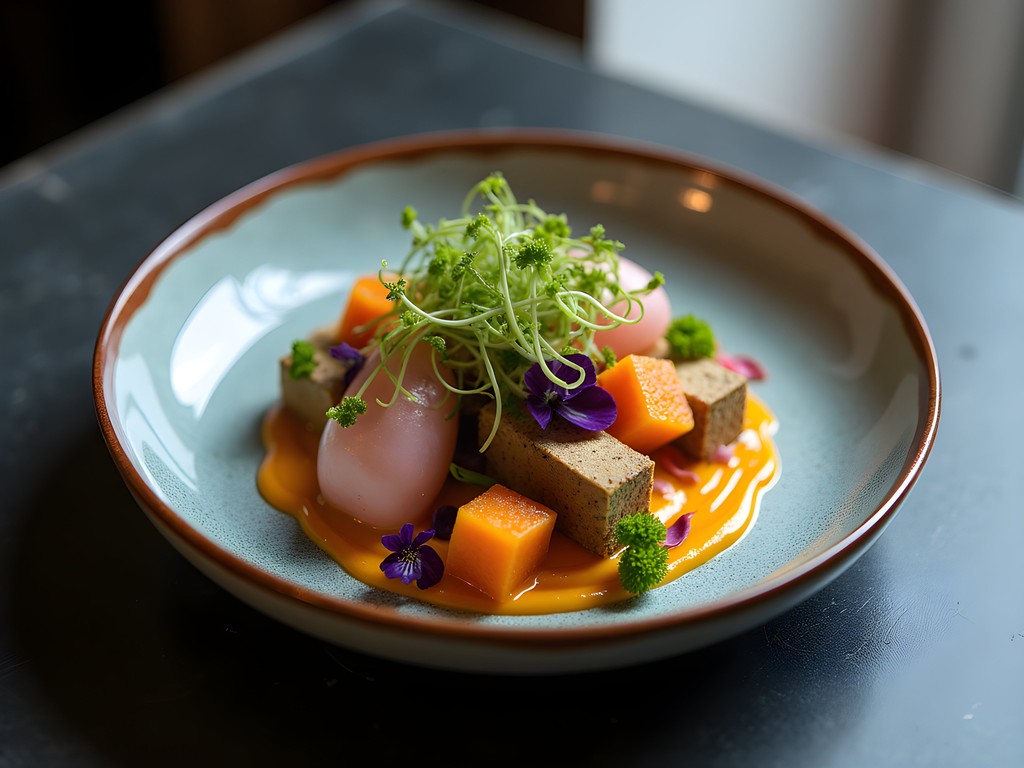
💡 Pro Tips
- Make reservations at fine dining establishments at least 2-3 weeks in advance
- Opt for tasting menus to experience the full range of the chef's vision and local ingredients
- Ask about the stories behind unfamiliar ingredients—servers are usually passionate about sharing this knowledge
Cooking the Colombian Way: Hands-On Cultural Immersion
For travelers seeking deeper connection with local food culture, I've found that cooking classes offer unparalleled insights. They transform you from passive consumer to active participant in cultural traditions, and when shared with a partner, they create collaborative memories that last far beyond your trip.
Our most memorable Bogotá experience was a private cooking class with Chef Catalina at her home kitchen in the residential Teusaquillo neighborhood. After meeting us at a small local market to select ingredients, she welcomed us into her apartment, where family photos lined the walls and the kitchen already smelled of toasting cumin and coriander.
Over the next four hours, we learned to prepare ajiaco santafereño, Bogotá's signature chicken and potato soup distinguished by its use of three potato varieties and guascas, an herb that gives the dish its distinctive flavor. Catalina explained how this soup represents Bogotá's mountain identity—hearty, warming, and featuring ingredients from the high-altitude savanna surrounding the city.
The class was hands-on in the best way—we didn't just watch demonstrations but actively participated in each step, from properly cutting potatoes to understanding how to balance the soup's flavors. Catalina shared family stories connected to the recipes, creating an intimate glimpse into Colombian home cooking that no restaurant could provide.
For our second cooking experience, we joined a group class at Paloquemao Market focused on Colombian street food. Under the guidance of Chef Antonio, we learned to make perfect arepas de choclo, patacones (twice-fried green plantains), and ají hot sauce. The communal cooking experience led to conversations with other travelers and locals alike—by the end of the three-hour session, we were sharing food, stories, and contact information with new friends from three different countries.
What made these cooking experiences special was their emphasis on technique rather than rigid recipes. We learned transferable skills and understanding of Colombian flavor principles that I've since incorporated into my cooking back home. My mortar and pestle now regularly grinds Colombian-inspired spice blends that transport me back to Bogotá's vibrant flavors.
Both cooking experiences concluded with shared meals where we enjoyed the fruits of our labor alongside local wines or fruit juices. Breaking bread together—especially food you've prepared with your own hands—creates immediate connection across language and cultural barriers.
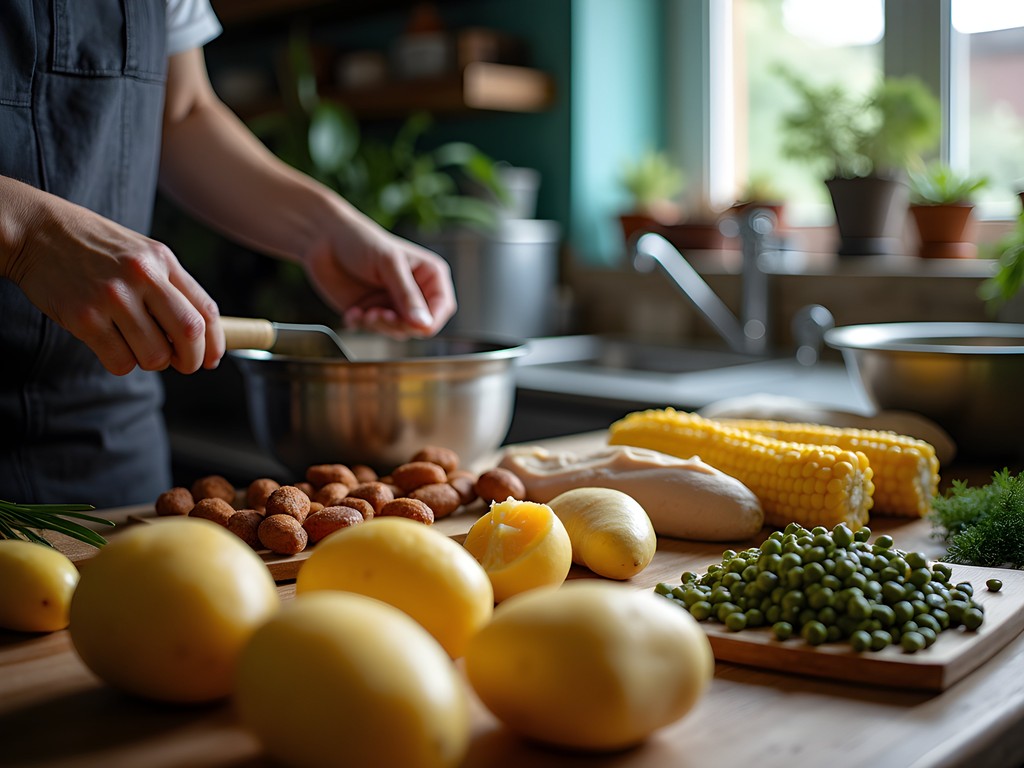
💡 Pro Tips
- Book cooking classes early in your trip so you can recognize ingredients and dishes throughout your stay
- Choose classes that include market visits for a more comprehensive cultural experience
- Take detailed notes or ask if recipes will be shared afterward so you can recreate dishes at home
Final Thoughts
As our week in Bogotá drew to a close, Mariana and I realized we'd experienced Colombia not just through our eyes or ears, but primarily through our taste buds. From humble street carts to innovative fine dining establishments, each meal had opened a window into this complex, vibrant culture that's reclaiming and redefining its culinary identity. The food of Bogotá tells a story of resilience, creativity, and profound connection to the land—qualities that resonate far beyond the dining table. For couples seeking meaningful travel experiences, Bogotá's culinary scene offers endless opportunities for shared discovery and connection. Whether you're sampling exotic fruits at Paloquemao Market, learning traditional cooking techniques from local chefs, or savoring innovative tasting menus that showcase Colombia's biodiversity, the city invites you to engage all your senses. Pack your appetite, an open mind, and perhaps pants with a forgiving waistband—Bogotá's flavors are waiting to transform your understanding of Colombian cuisine forever.
✨ Key Takeaways
- Bogotá's food scene spans from traditional markets and street food to world-class fine dining, offering options for every budget and preference
- Colombian coffee culture is experiencing a renaissance, with specialty cafés offering tastings and workshops that reveal the complexity of the country's beans
- Cooking classes provide the deepest insight into local food culture and techniques you can bring home
- The city's culinary offerings reflect Colombia's incredible biodiversity and multicultural heritage
📋 Practical Information
Best Time to Visit
year-round (Bogotá has consistent temperatures due to its elevation)
Budget Estimate
$75-150 per day per person excluding accommodations
Recommended Duration
5-7 days
Difficulty Level
Beginner
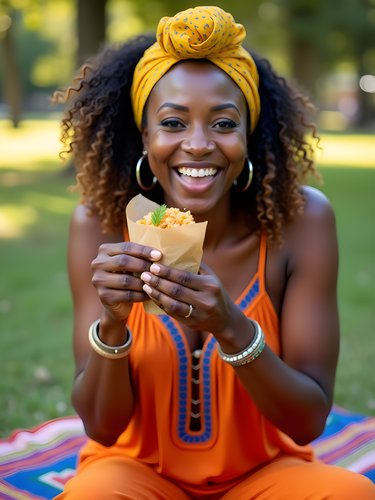
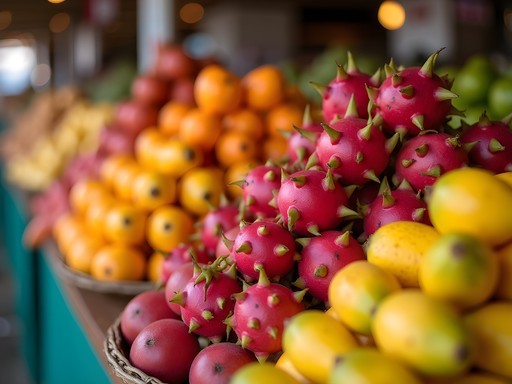
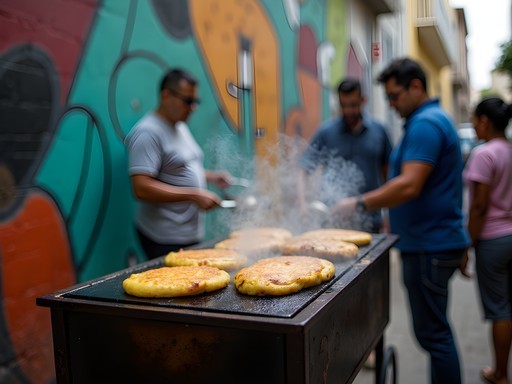
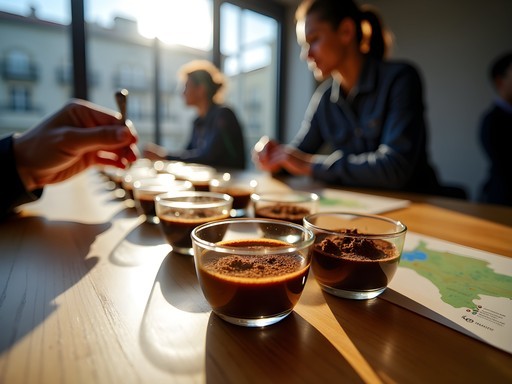
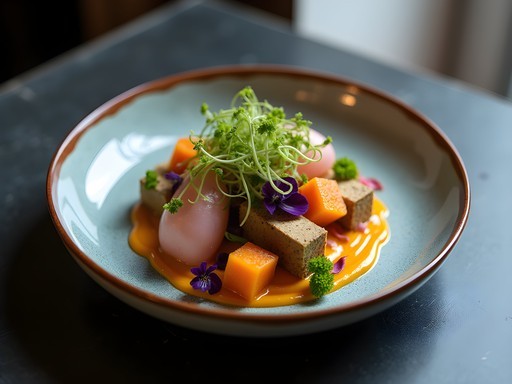
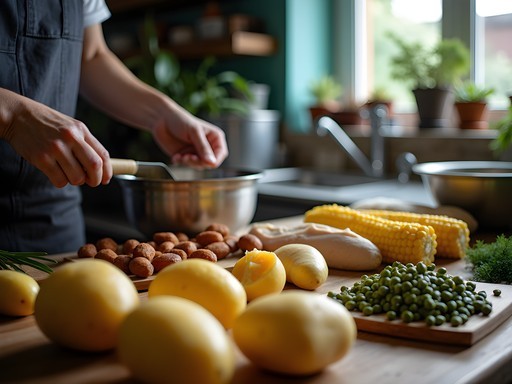




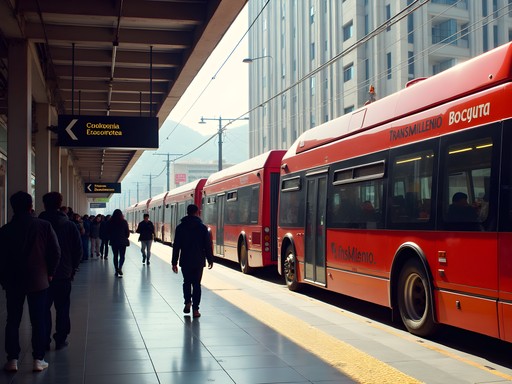
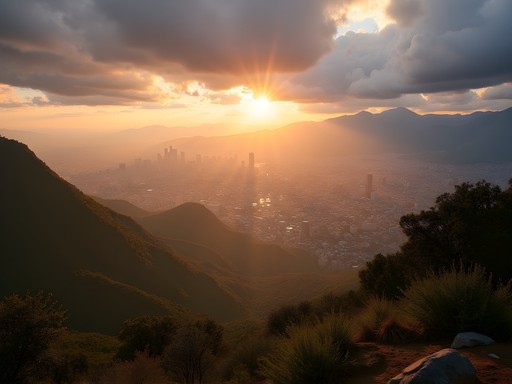
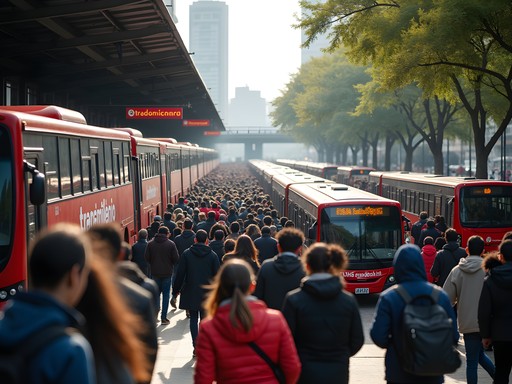



Comments
Hannah Woods
Fantastic write-up on Bogotá's food scene, Tiffany! Your Paloquemao Market section brought back so many memories. When I visited last year, I spent nearly an entire day there, talking with vendors and sampling fruits I'd never even heard of before. The guanabana was a revelation! I'd add that visitors should definitely try the hot chocolate with cheese (chocolate santafereño) - sounds bizarre but it's a delightful local tradition. Also, for those concerned about altitude, I found carrying altitude sickness tablets really helped me adjust during those first couple of days so I could fully enjoy the culinary experiences without feeling lightheaded. Did you make it to any of the restaurants in Usaquén? The Sunday market followed by lunch at one of the colonial buildings-turned-restaurants was another highlight for me.
Tiffany Hicks
Hannah, you're absolutely right about chocolate santafereño! I should have included that - such a unique experience dropping cheese into hot chocolate. And yes, we did make it to Usaquén on our last day! The Sunday market was charming, and we had an incredible meal at Casa Vieja. The atmosphere in those colonial buildings is something special.
coolguy
Wait, chocolate with cheese?? That sounds crazy but I'm intrigued! Adding it to my must-try list.
Hannah Woods
@coolguy It's surprisingly delicious! The cheese gets slightly melty but doesn't fully dissolve. You eat it with a spoon after it softens. Trust me, it works!
coolguy
This makes me wanna book a flight to Bogotá right now! How safe is it for solo travelers who don't speak much Spanish? Those arepas look amazing btw!
Tiffany Hicks
Thanks for reading, coolguy! Bogotá is generally safe for solo travelers if you take normal precautions. In touristy areas and restaurants, you'll find many people who speak some English. I'd recommend learning basic food-related Spanish phrases though - it enhances the experience and locals really appreciate the effort!
coolguy
Sweet, thanks for the tips! Definitely gonna download a Spanish food phrases app before going.
FoodieTravels
Those arepas look INCREDIBLE! Your food photography skills are making me hungry!
vacationmaster
Your section on the fine dining scene is spot on! We splurged on dinner at Leo last year and it was worth every penny. Chef Leonor Espinosa's tasting menu was like a journey through Colombia's different regions. The ants (yes, actual ants!) were surprisingly delicious! But what I loved most about Bogotá was how you could eat amazing food at any price point. One morning we'd have a $2 breakfast at a local bakery, then the next night drop $100 on a fancy dinner, and both meals would be incredible in their own way. The altitude hit me hard though - definitely had to pace myself with those craft beers you mentioned!
mountain_hiker
The altitude is no joke! I got the worst headache my first day. Wish I'd read this before going.
vacationmaster
@mountain_hiker Coca tea helped me a lot! They sell it everywhere there.
ColombiaTraveler2023
Going to Bogotá next month! Any specific street food vendors you'd recommend? Those arepas look amazing!
vacationmaster
Not the author but don't miss the ajiaco soup stands in La Candelaria! There's an amazing one on Calle 11 that serves it with all the traditional sides. And grab a hot chocolate with cheese at La Puerta Falsa - sounds weird but trust me!
ColombiaTraveler2023
Hot chocolate with cheese?! That's wild but I'm definitely trying it! Thanks for the tips!
Hunter Thompson
Also check out the empanada stand at the corner of Carrera 7 and Calle 22. Best I had in the city! And if you're into coffee, don't just stick to the touristy cafés - I found this amazing little place called Café Cultor where they do brewing workshops. I brought back some beans and my manual grinder has been working overtime since I got home!
Hunter Thompson
Brilliant write-up, Tiffany! Your Paloquemao Market section brought back so many memories. I spent three weeks in Bogotá last summer and practically lived in that market. The fruit section is mental - I tried fruits I'd never even heard of before! Did you get to try lulo? That tangy citrus flavor absolutely blew my mind. And the arepas con queso from the little stall near the eastern entrance were my daily breakfast. For anyone heading there, definitely go early (like 6-7am) to see the market when it's most alive with locals. The seafood section is surprisingly good for a landlocked city too!
vacationmaster
Totally agree about going early! We made the mistake of showing up at noon and missed half the action. Still amazing though!
Hunter Thompson
@vacationmaster The morning flower auction alone is worth the early wake-up call. And the coffee vendors are much more generous with samples early in the day 😉
exploreseeker
This post couldn't have come at a better time! Heading to Bogotá next month and I'm all about the food experiences. Those ajiaco photos have me drooling! 😍
Haley Hamilton
You're going to love it! Make sure to try the obleas too - these thin wafer sandwiches with arequipe (caramel). Street vendors sell them everywhere. Perfect sweet treat after all the savory goodness!
exploreseeker
Omg that sounds amazing! Adding it to my list right now. Thanks for the tip!
backpackzone
Just got back from Bogotá last week! Pro tip for anyone going: bring your pocket Spanish phrasebook to the local markets. The vendors really appreciate the effort and you'll get better recommendations. Also, don't miss the hot chocolate with cheese - sounds weird but it's amazing!
exploreseeker
Hot chocolate with cheese?! That sounds crazy but I'm intrigued! Where's the best place to try it?
backpackzone
La Puerta Falsa in the historic center! It's tiny but super authentic. They've been serving it since like the 1800s. The cheese slowly melts into the chocolate and it's weirdly perfect.
Haley Hamilton
Your post brought back so many memories! I spent three weeks in Bogotá last year and completely fell in love with the arepas con queso from this tiny street vendor in La Candelaria. The woman who made them would always throw in an extra one when I practiced my terrible Spanish with her. I also discovered that the coffee culture there is next level - I took a cupping class at Catación Pública that changed how I think about coffee forever. Did you make it to Andrés Carne de Res? It's technically in Chía but worth the trip - it's like a food theme park!
Tiffany Hicks
Haley, those arepas con queso in La Candelaria are heavenly! And yes, we did make it to Andrés Carne de Res - what an experience! I should have mentioned it in the post. The combination of food, music, and absolute chaos was unforgettable!
cityqueen
That Paloquemao Market sounds amazing! How early should you get there? I'm planning a trip in January and want to experience the real local food scene.
Tiffany Hicks
The earlier the better! I'd recommend getting there by 7-8am to see the market at its liveliest. The fruit section is incredible - don't miss trying lulo and granadilla!
cityqueen
Thanks so much! Adding this to my itinerary for sure. Can't wait to try those fruits!
Venture X
Premium card with 2X miles, $300 travel credit, Priority Pass